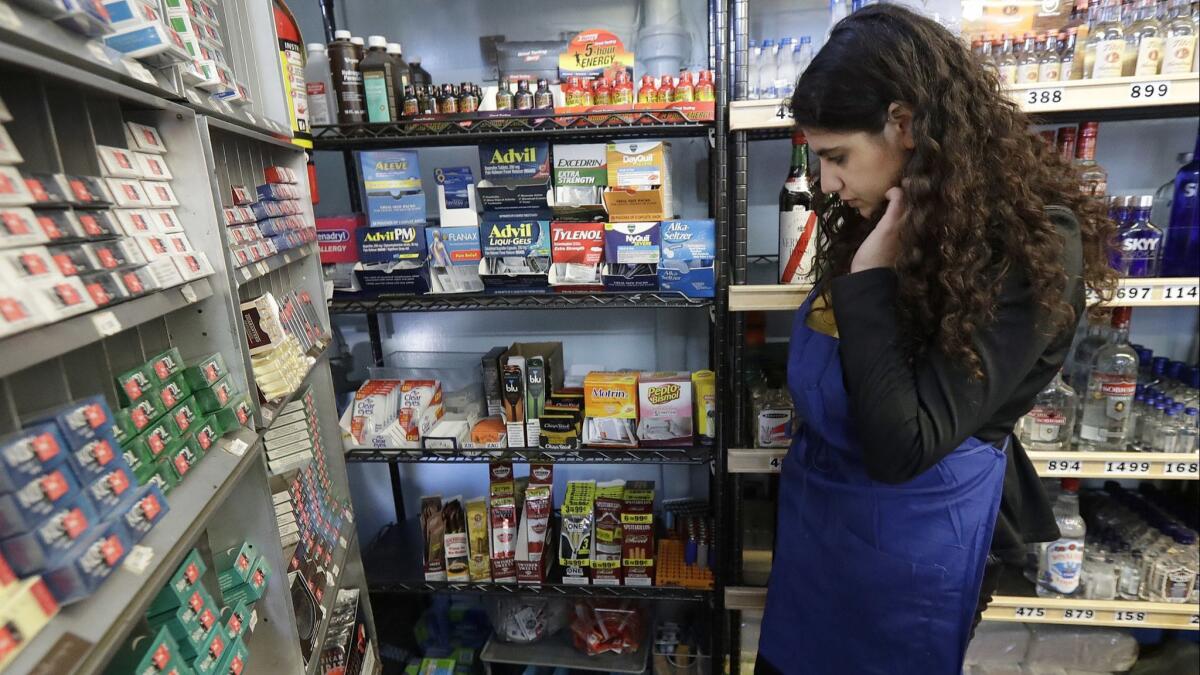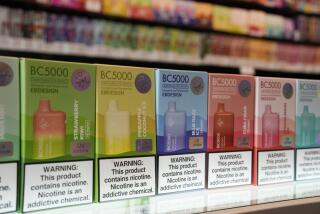Editorial: Half of all underage smokers choose menthols. We need to kick Kools to the curb

- Share via
When the U.S. Food and Drug Administration banned child-friendly flavors in cigarettes in 2009, it didn’t include menthol cigarettes. That was unfortunate because, like cherry and mocha, menthol hides the harsh taste of tobacco and as a result is popular with young and underage smokers.
The FDA is expected to right that wrong this week by proposing to ban menthol cigarettes altogether, while also imposing new restrictions on the sale of flavored e-cigarettes at gas stations and convenience stores. Anti-smoking advocates say that a rule banning menthol cigarettes, provided it is not watered down or undermined, would be the most important tobacco reduction action the FDA has ever taken. Today, about a quarter of all the cigarettes sold are mentholated.
Half of all smokers under 18 choose menthols, according to the FDA, perhaps because the light minty taste makes it easier to ignore the health-destroying damage done with each inhalation — and also because advertisements for menthol cigarettes are especially common in publications targeted to young people.
Enter the Fray: First takes on the news of the minute from L.A. Times Opinion »
Menthol cigarettes may also be harder to quit, as one 2009 study concluded. It noted that the cooling sensation of the menthol encourages smokers to inhale more deeply, which increases the amount of nicotine consumed — which in turn increases the smoker’s addiction. It’s an insidious cycle.
About 75% of African American teenage smokers choose menthols, thanks to especially aggressive marketing in black communities. Well aware of this, the delegates at the NAACP’s 2016 national convention voted to support efforts to restrict the sale of menthol cigarettes.
The proposed FDA rule limiting the sales of flavored e-cigarettes at gas stations and convenience stores is also important and couldn’t come at a better time. New data from the National Youth Tobacco Survey expected to be released later this week will show a 77% increase in e-cigarette use this year over the last. FDA Commissioner Scott Gottlieb called the growth of e-cigarette use among teens “epidemic.”
The FDA needs to stay strong as it pushes these new regulations through; there will inevitably be blowback from the tobacco industry. Cigarette companies, worried about losing revenues from a menthol ban, could respond in a variety of worrisome ways. For instance, if the FDA doesn’t include cigars and cigarillos in the menthol ban, then the tobacco companies could simply mentholate them as a replacement product. That’s what the industry did after the fruit and candy flavor ban. Gottlieb and the FDA should fight efforts to water down the proposed rules.
Smoking is an addictive and dangerous habit, and while the FDA lacks the authority to ban tobacco use outright, it has the right — and indeed the responsibility — to make it less attractive and less accessible to young people. This might do it.
Follow the Opinion section on Twitter @latimesopinion and Facebook
More to Read
A cure for the common opinion
Get thought-provoking perspectives with our weekly newsletter.
You may occasionally receive promotional content from the Los Angeles Times.









